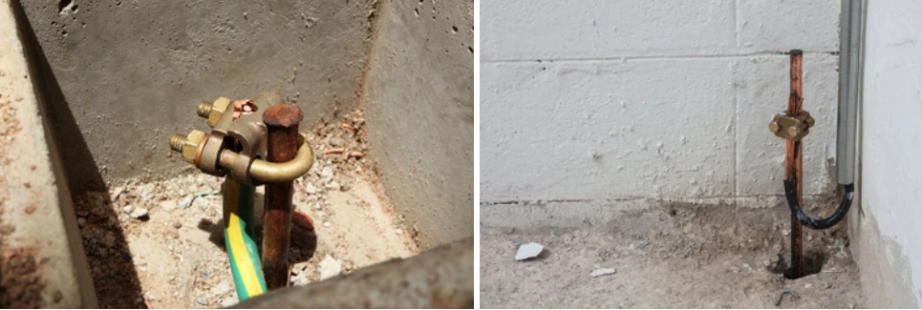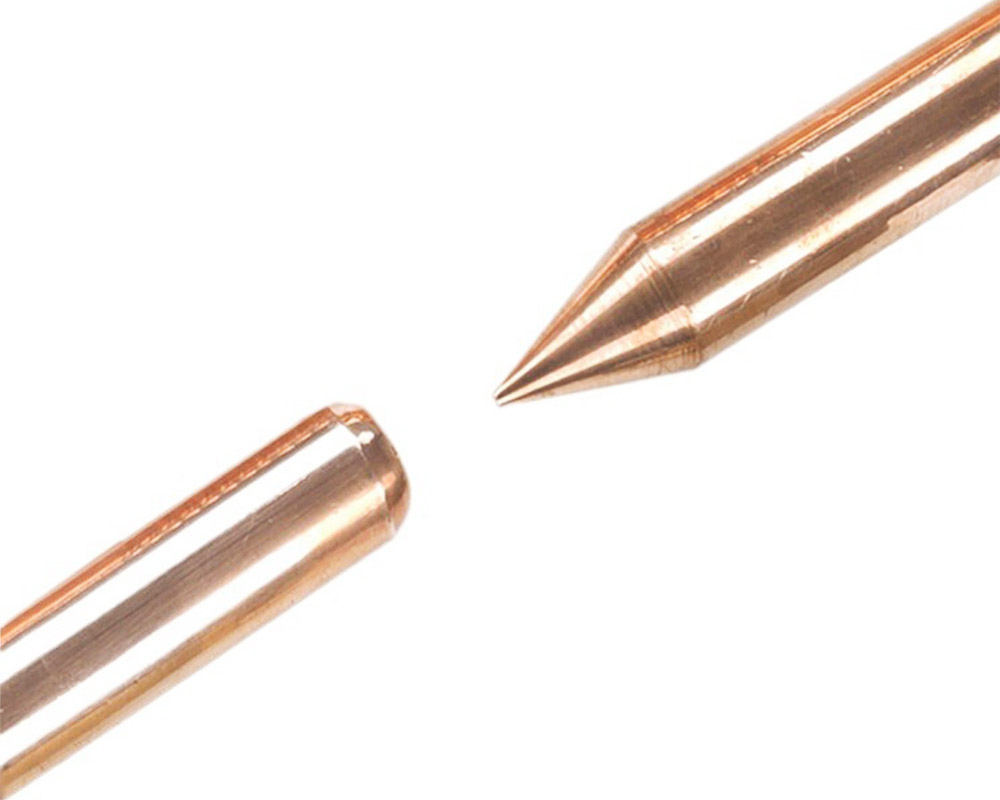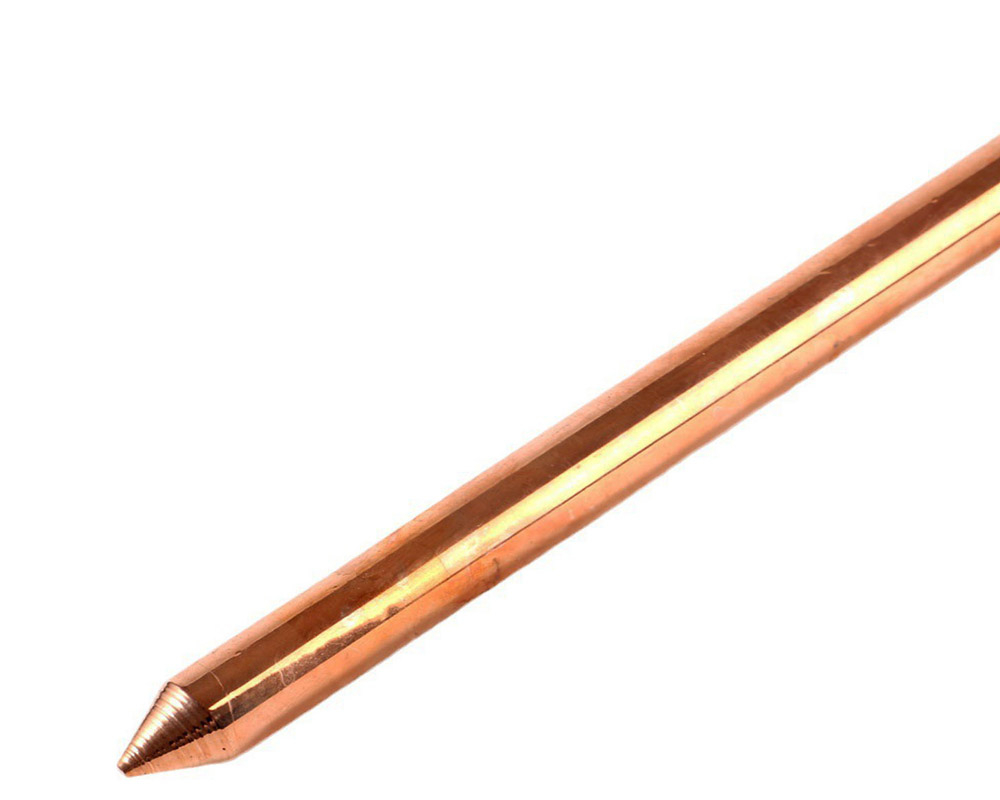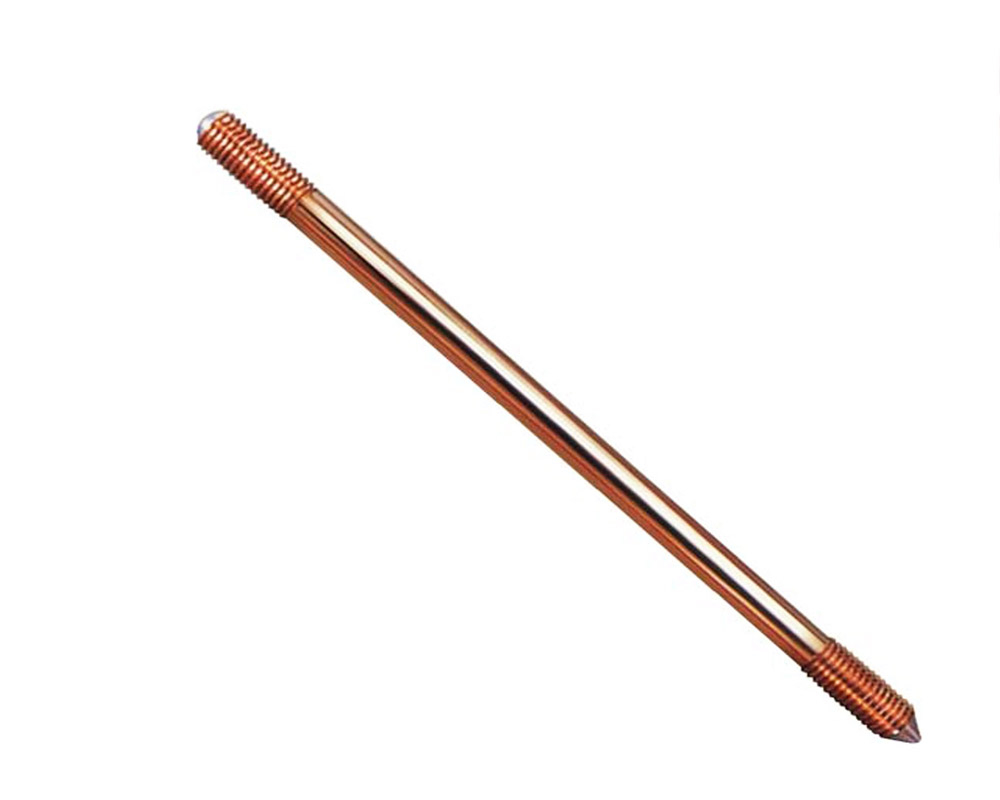Earthing Rod(Copper-clad steel grounding rod)
Product Highlight
-
Refined Matterial
-
Standard Process
-
Free Sample & Test
-
Long Life-circle
Product Details
PRODUCTION INTRODUCTION
- UME Cable Copper-clad steel grounding rod is a bimetallic composite material that is a composite conductor formed by the processing of copper and steel through special technologies. This conductor possesses high strength, excellent flexibility, relatively large thermal resistance favorable electric conductivity of copper, and optimized anti-corrosion performance.
- Copper-clad steel earth rod is a combination of mechanical strength and anti-corrosion performance, an earth electrode that has a favorable earthing effect and is lower in cost, and convenient when applied in construction. This product is cast by 99.9% pure copper raw material through the adhesion of molecular structure onto medium and low carbon steel cores. Due to the skin effect in which electric current flows throughout the conductor, the electric conductivity proves and the anti-corrosion performance is extremely favorable.
- Meanwhile, the steel applied has an extremely high tensile strength, and the vertical earth electrode can directly be driven into the ground.
APPLICATION
- Copper-clad steel grounding rods are suitable for general environments and special environments where moisture, salty-alkali acidic soil and chemically corrosive media are produced. They are widely used in power plants, substations, transmission line towers, communication base stations, airports and railways, high-rise buildings, oil storage depots and other places. Grounding lightning protection, anti-static grounding, protective grounding, etc.
PERFORMANCE STANDARDS
- Copper-steel molecular combining technology, strong electrical conductivity
- Resistivity: ≤0.059Ω·mm²/m
- Tensile strength: ≥600N/mm²
- Good corrosion resistance
Steel: high-quality low carbon steel with a carbon content of 0.10%-0.30%
Copper: Highly conductive electrolytic copper, containing 99.9% copper
Process: Electroplating process
Diameter range: 12.7-25mm
Copper layer thickness: ≥0.25mm
Length range: 1000-3000mm
Certification: CE ISO IEC SGS BV
INSTALLATION OF GROUNDING ROD
- Choose the appropriate location: The ground rod should be installed closest to the electrical equipment to ensure that current can flow directly to the ground. Generally speaking, it is recommended to install the ground rod no more than 5 meters away from electrical equipment.
- Prepare the grounding rod: Choose an electrolytic copper grounding rod that meets national standards. The length is generally 1.5 meters to 2 meters and the diameter is between 16 and 20 millimeters. The quality and material of the ground rod are very important because it is directly related to the quality of the grounding effect.
- Dig a grounding well: Depending on the length of the grounding rod, dig a grounding well with a depth of 0.7 meters to 1 meter and a diameter of 30 to 40 centimeters. The well wall should be vertical and flat bottom Leave enough space for the ground rod.
- Install the grounding rod: Insert the grounding rod vertically into the grounding well, making sure that one end of the grounding rod is exposed outside the well. The grounding rod must be firmly fixed and cannot move.
- Connect the ground wire: Use a wire that meets the specifications to connect the ground rod to the metal shell of the electrical equipment. The specifications and connection methods of the wires should be selected according to the power and requirements of the electrical equipment.
- Fill the grounding well: Fill the grounding well with clean soil to ensure the stability of the grounding rod. At the same time, make sure the soil is moist to improve the grounding effect.
- Ground detection: After installation is completed, conduct ground detection to ensure that the ground impedance meets the specification requirements. Too high a ground impedance can cause a poor ground, while too low a ground impedance can cause a ground fault.
- By following the above steps correctly, you can ensure the effective installation of the ground rod. Be sure to operate according to national standards and specifications, and consult a professional to ensure safety if you are unsure.

Standard Specification
Grounding Rod Specification
| ITEM | TYPE | SPEC. | AVERAGE COPPER THICKNESS |
| GROUNDING ROD | UM-CCS-1415D | φ14.2X 1500mm | 0.254mm |
| GROUNDING ROD | UM-CCS-1425D | φ14.2X 2500mm | 0.254mm |
| GROUNDING ROD | UM-CCS-1615D | φ16X 1500mm | 0.254mm |
| GROUNDING ROD | UM-CCS-1625D | φ16X 2500mm | 0.254mm |
| GROUNDING ROD | UM-CCS-1715D | φ17.2X 1500mm | 0.254mm |
| GROUNDING ROD | UM-CCS-1725D | φ17.2X 2500mm | 0.254mm |
| GROUNDING ROD | UM-CCS-2015D | φ20X 1500mm | 0.254mm |
| GROUNDING ROD | UM-CCS-2025D | φ20X 2500mm | 0.254mm |
| GROUNDING ROD | UM-CCS-2525D | φ25X 2500mm | 0.254mm |
| GROUNDING ROD | UM-CCS-115D | 1" X 1500mm | 0.254mm |
| GROUNDING ROD | UM-CCS-118D | 1" X 1800mm | 0.254mm |
| GROUNDING ROD | UM-CCS-3412D | 3/4" X 1200mm | 0.254mm |
| GROUNDING ROD | UM-CCS-3415D | 3/4" X 1500mm | 0.254mm |
| GROUNDING ROD | UM-CCS-3418D | 3/4" X 1800mm | 0.254mm |
| GROUNDING ROD | UM-CCS-5812D | 5/8" X 1200mm | 0.254mm |
| GROUNDING ROD | UM-CCS-5815D | 5/8" X 1500mm | 0.254mm |
| GROUNDING ROD | UM-CCS-5818D | 5/8" X 1800mm | 0.254mm |



